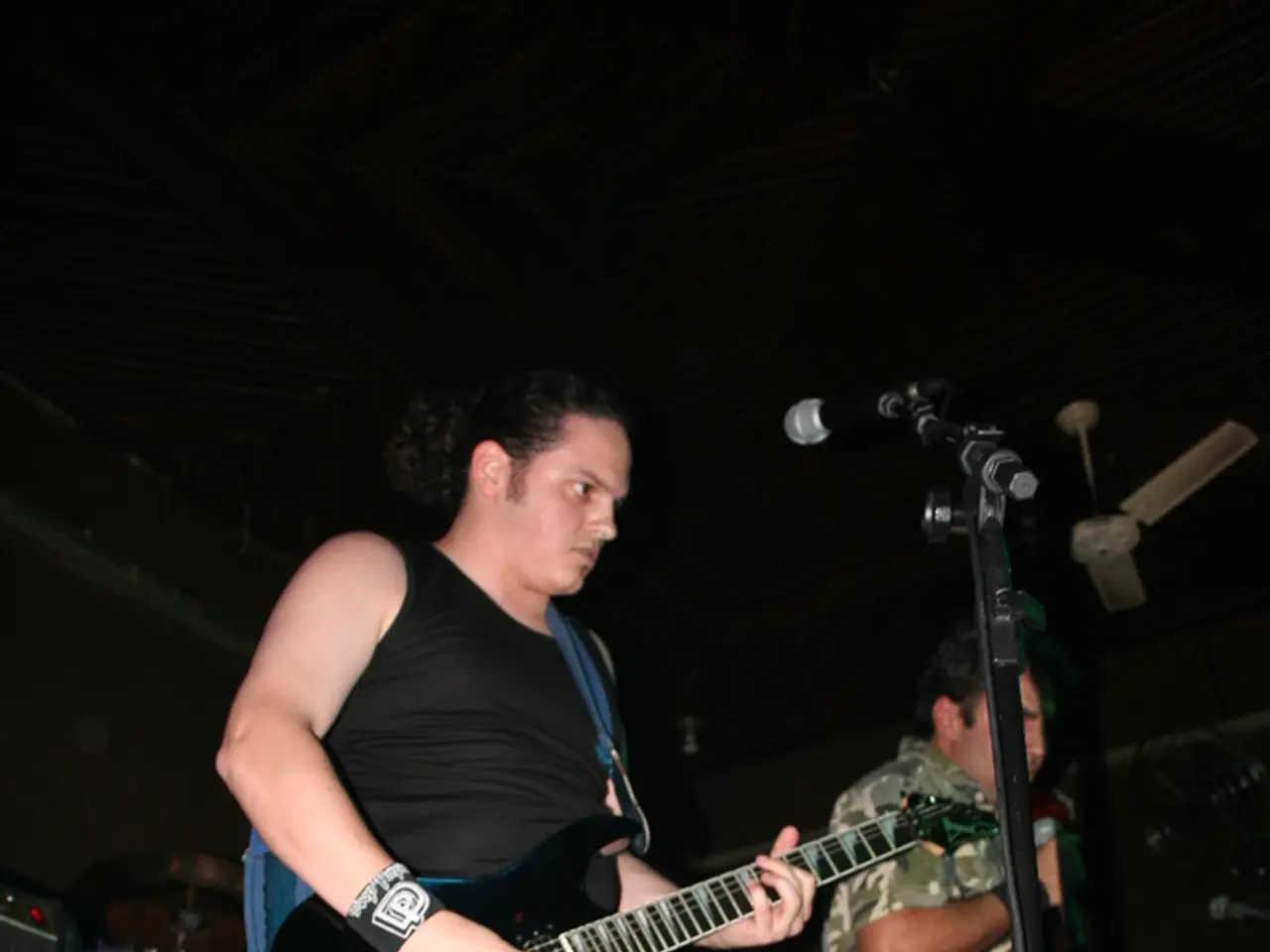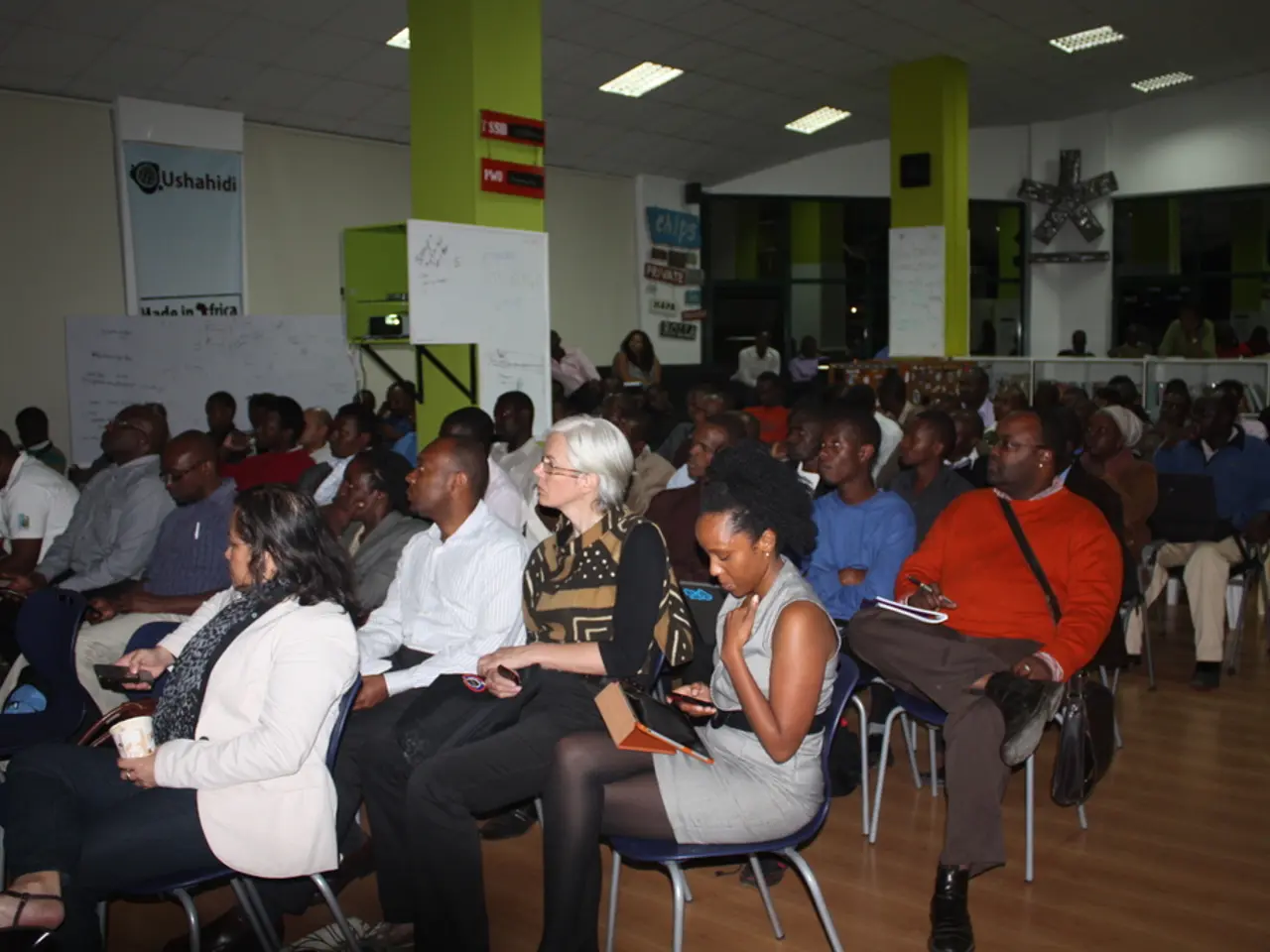Mastering Audio Fundamentals: Crucial Insights for Audio Mixing and Mastering Newcomers
In the realm of music production, having a well-equipped home studio can open up a world of creative possibilities. This guide will walk you through the essential gear and software needed to set up your own studio, along with some tips and techniques to help you get started.
Core Hardware
At the heart of your studio lies a powerful computer. A PC or Mac with at least a 2.2GHz multi-core processor, 4GB RAM (preferably more), and at least 256GB for system files, and 1TB storage for projects and samples is recommended. A screen size of 15" or larger is advisable for usability.
An audio interface is vital for converting analog signals into digital sound. Look for one with low latency and multiple inputs/outputs to suit your needs.
Studio monitors are crucial for accurate sound mixing. Medium-sized monitors strike a balance, avoiding frequency response issues in small rooms. Headphones, particularly studio monitor headphones, are essential for detailed listening, especially during late-night work or intricate editing.
For vocals or instruments, USB condenser microphones like the Vault UCM-FX USB Condenser Mic or the Audio Array USB Condenser Microphone Kit offer clear sound and noise reduction features at a budget-friendly price.
Essential Software (DAWs - Digital Audio Workstations)
Highly recommended for beat-making and electronic music production are Ableton Live and FL Studio, both coming with rich built-in features. Alternative DAWs include Logic Pro (if using a Mac), Pro Tools, or Cubase.
Additional Gear
A MIDI controller facilitates melody and rhythm input, an essential tool for electronic music and composition. A well-designed studio desk helps with good monitor placement and equipment organization.
Summary in a Table
| Category | Recommended Gear/Software | Notes | |-------------------|--------------------------------------------------|----------------------------------------------------| | Computer | PC/Mac, 2.2GHz+ multi-core, 4GB+ RAM, 1TB+ storage | Essential for smooth DAW operation | | Audio Interface | Not specified but needed | Low latency, multiple I/O preferred | | Studio Monitors | Medium-sized monitors | More accurate than consumer speakers, match room size| | Headphones | Studio monitor headphones | For detailed listening and mixing | | Microphone | Vault UCM-FX USB Condenser, Audio Array USB Kit | Budget-friendly, good clarity and noise reduction | | MIDI Controller | Affordable basic MIDI controller | For inputting melodies and beats | | Software (DAW) | Ableton Live, FL Studio | Great for electronic music and beat creation | | Studio Desk | Desks with good surface area | For proper monitor placement and comfort |
This setup can range from budget-friendly under $1,000 (or equivalent currencies) using USB mics and affordable monitors, to more sophisticated systems based on your growing needs and budget.
For a highly integrated, compact, and easy-to-setup solution, focusing on a good computer, a DAW like Ableton, quality studio monitors, and a USB mic is a great starting point.
Techniques and Tips
- Level matching is crucial when using reference tracks to avoid the louder-is-better bias, which can skew perception.
- Sequencing is about arranging tracks in a way that makes sense for the album, creating a cohesive listening experience.
- Starting small by practicing on simpler projects and focusing on mastering fundamental skills is recommended for beginners.
- Enrolling in courses from platforms like MixProdMasters can provide detailed guidance on improving mixing and mastering skills.
- Distortion can add warmth and character to a mix, but must be used carefully to avoid unwelcome noise.
- Panning can distribute sounds across the stereo field, creating a more immersive listening experience.
- Dynamics processing, including compression and limiting, help maintain balance throughout a track.
- Consistently evaluating a mix on different systems and environments can help identify imbalances.
- Taking breaks can help refresh your ears and catch details you might overlook during long sessions.
- Limiting is the final compression stage in mastering, setting a ceiling on the audio signal to prevent distortion.
- Achieving tonal balance is key to a polished mix, ensuring all frequencies are represented evenly.
- Automation can be used to adjust volume, effects, and EQ dynamically throughout the song.
- Equalization (EQ) is used to adjust frequencies, allowing each instrument to occupy its space in the spectrum.
- Experimenting with audio effects like reverb and delay can add depth and create space within tracks.
- Listening to your mix in different environments can provide diverse perspectives, ensuring your track sounds great everywhere.
Learning Further
Looking for respected audio production sites or music schools that might provide downloadable PDFs on essential techniques like equalization and compression.
Mastering the Art
Becoming proficient can take several months to years depending on dedication and practice frequency. Mastering a song involves refining the finished mix to ensure it sounds great on all playback systems. Over-compressing can lead to a dull sound, so less is often more when using compression.
- A well-equipped home studio requires a powerful computer with at least a 2.2GHz multi-core processor, ample RAM, and sufficient storage for smooth DAW operation.
- An audio interface is crucial for converting analog signals into digital sound, with low latency and multiple inputs/outputs being desirable features.
- Medium-sized studio monitors offer accurate sound mixing and are more suitable for small rooms compared to large ones.
- Studio monitor headphones are essential for detailed listening, especially during late-night work or intricate editing.
- For vocals or instruments, budget-friendly USB condenser microphones like the Vault UCM-FX USB Condenser Mic or the Audio Array USB Condenser Microphone Kit deliver clear sound and noise reduction features.
- When embarking on a new music production journey, learning from respected audio production sites, music schools, or online course platforms can provide valuable guidance, resources, and techniques like equalization and compression.




